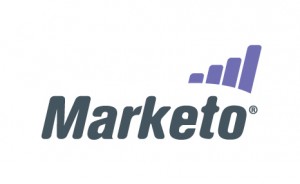Marketing Automation and Marketo IPO (Another View)
Alex Williams of TechCrunch reports that as of the end of Q4 in 2012, Marketo was at a deficit of about $82.2 million. [1] The $75 million IPO obviously won’t relieve Marketo of all that debt, but it will do one thing: position them for new growth and marketing.
In the fast-paced business world of grow-often-grow-more, big companies like Marketo recognize the inherent potential of automation marketing and are ready to take it as global as possible. The Marketo IPO will give the company funding to better compete with Oracle and other larger cloud solutions who are getting involved in the marketing automation game. However, there are some downsides to the Marketo IPO filing – and you should be aware of them.
Getting Too Big for Their Britches
In many cases, an IPO filing of this size could hint at Marketo’s desire to set itself up for acquisition. Popular articles out in the blogosphere speculate that this buyout would come from Marketo’s partner company, Salesforce. Clearly Marketo would be a great buy for Salesforce and a win-win for everyone involved – right?
Not necessarily. In previous articles, we’ve discussed how Marketo’s out-of-the-box solution becomes less user friendly later in the process when a client wants to explore Marketo’s full marketing automation functions. If you think Marketo is only going to get more user-friendly when it’s bought out by another company, you might want to think again.
Acquisitions – or growth of any kind – aren’t always necessarily the best answer for a service’s customer base. If you need a good example of this, take a look at Ooma Telo. (www.ooma.com). A popular internet telephone service, Ooma’s growth has forced them to make the kind of overseas customer service strides and policy enforcement that can end up being very painful for customers.
You may find that after the Marketo IPO, you’re paying the same money for Marketo services – ensuring they can use your money to pay the bills – while the new funds are put toward getting new customers instead of servicing existing ones.
Going with a Smaller Company
It’s not that brands like Lead Liaison aren’t positioning for growth – it’s that we’re growing, quarter to quarter. We’re interested in profitability and accountability – not in making business investments while we’re still in the red. These types of investments could guarantee that not only will you get crummy service – you’ll be without a marketing automation solution when the company goes belly up. Worse, if the company does start to fold, a competitor could buy it out for cheap – and where would that leave you, the customer?
This is why at Lead Liaison, we’re growing comfortably and at the best pace for our clients. We don’t spend money we don’t have – we are positioning ourselves for the future so that we can adequately care for current and new customers. This is our absolute top priority. Marketo is losing money fast, and we’re gaining. We aim to keep it that way – and we won’t make far reaching decisions that could possibly affect you just to corner the market. It’s about customers from top to bottom.
To find out more about how Lead Liaison is 100% committed to serving you first and foremost, contact us for a free consultation today.
[1] Alex Williams. “Marketing Files for $75M IPO to Grow SaaS Marketing Platform.” http://techcrunch.com/2013/04/02/marketo-files-for-75m-ipo-to-grow-saas-marketing-platform/











